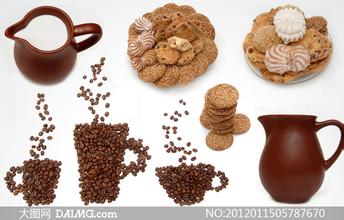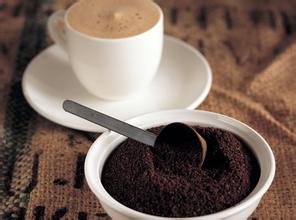Introduction to the Grinding scale of varieties produced by Panamanian Geisha Rosa Coffee Flavor description method
Introduction to the Grinding scale of varieties produced by Panamanian Geisha Rosa Coffee Flavor description method
The unique orange flavor of a Panamanian geisha is so moving that it has "the orange fragrance gene kissed by God". It must have benefited from the protection of good mountains and water in Panama. The low temperature and stable climate at high altitude makes the coffee here grow slowly and the beans are hard. All have a unique and strong flavor. Although geisha is good, its output is really limited. The annual production of geisha in Jade Manor is less than 12 tons, and the top grade is no more than 200 to 300 kilograms, so it is difficult to satisfy the taste buds of coffee lovers all over the world. as a result, major well-known producing areas around the world have stepped up the trial of geisha, trying to show different landforms and different flavors of geisha, which is very good. Coffee worms have a good taste.
Panama's geographical conditions from east to west allow cold air to flow through the Central Mountains at more than 6500 feet, thus forming a variety of unique microclimates in places such as Boquete, Volc á n, Candela and Santa Clara, coupled with nutritious and balanced volcanic ash soil, these areas have also become Panamanian coffee and famous producers of the world's top boutique coffee.
There is a whisper in the American coffee industry: the top Kona of Hawaii tastes like Panama, the gourmet Blue Mountains resembles Panama, and the best Costa Rica also tastes like Panama. This whisper implies that one bean in Panama is worth three beans, and it also reflects the prevalence of adulteration in the industry and the serious underestimation of Panama (this refers to Panama in the high-altitude areas of the west, rather than other low-altitude ordinary Panama). The Kona adulteration case, which shocked the United States more than a decade ago, replaced the expensive Kona beans with Panamanian beans from the western Boqui specialty area. Unfortunately, they were caught. Now that the Geisha War has become famous, Panamanian coffee has finally gone from an unknown double or daidou to a best actress coffee file in Ethiopia: the coffee seeds were taken from the geisha mountain in 1931, transplanted to Kenya in 1932, transferred to Tanzania in 1936, transferred to Costa Rica in 1953, and then retransplanted to Panama in about the 1960s, and has been cut off since then. At that time, at the request of Britain, Ethiopia exported geisha to help coffee-producing countries improve their varieties to enhance disease resistance, but the effect was limited, because geisha had strong disease resistance but produced very little fruit, and in the era of being mixed with geisha, the production capacity was not good, so it disappeared after the 1960s. It turned out that the geisha was hiding in the Jhala Miyou Manor, and it was only 40 years later that she spit out fragrance.

Important Notice :
前街咖啡 FrontStreet Coffee has moved to new addredd:
FrontStreet Coffee Address: 315,Donghua East Road,GuangZhou
Tel:020 38364473
- Prev

Characteristics of Panamanian Coffee Taste Manor Flavor description treatment quality Grinding scale introduction
Panamanian coffee practice characteristics, taste, manor flavor description, quality grinding scale, this bean is washed in full water, the appearance is fresh emerald green, the beans are full and shiny, and at first glance they are hard beans with high density. Baked to an obvious degree of high fruit aroma shows, the entrance is also juice-like sweet and sour, bright and refreshing. Bake a little deeper to the baking degree of high, dry fragrance
- Next

Description of Coffee Flavor in Las Haas Manor, Costa Rica
Costa Rica Las Haas Manor Coffee Flavor description Coffee Variety Regional treatment method introduction to Las Lajas Estate Yellow Honey country: Costa Rica; production area: central Valley Grade: SHB; treatment: yellow Honey treatment altitude: 1300-1500m; Variety: Caturra, Catuai Flavor description CUPPING
Related
- Detailed explanation of Jadeite planting Land in Panamanian Jadeite Manor introduction to the grading system of Jadeite competitive bidding, Red bid, Green bid and Rose Summer
- Story of Coffee planting in Brenka region of Costa Rica Stonehenge Manor anaerobic heavy honey treatment of flavor mouth
- What's on the barrel of Blue Mountain Coffee beans?
- Can American coffee also pull flowers? How to use hot American style to pull out a good-looking pattern?
- Can you make a cold extract with coffee beans? What is the right proportion for cold-extracted coffee formula?
- Indonesian PWN Gold Mandrine Coffee Origin Features Flavor How to Chong? Mandolin coffee is American.
- A brief introduction to the flavor characteristics of Brazilian yellow bourbon coffee beans
- What is the effect of different water quality on the flavor of cold-extracted coffee? What kind of water is best for brewing coffee?
- Why do you think of Rose Summer whenever you mention Panamanian coffee?
- Introduction to the characteristics of authentic blue mountain coffee bean producing areas? What is the CIB Coffee Authority in Jamaica?

